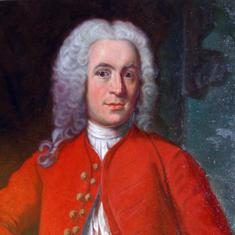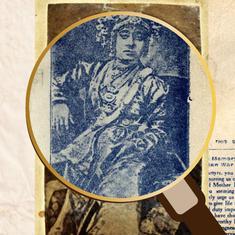On a cold December day in 1901, a crowd gathered at the Cathedral of St Paul in Boston to listen to a speaker described by The Boston Post as “one of the most distinguished women in all the length and breadth of King George VII’s royal Indian domain”. That speaker was Susie Sorabji, an educator from an illustrious Parsi Christian family.
Sorabji was touring the US to raise funds for Christian education in Pune. But to her audiences, and the media, as interesting as her cause was her ethnic background.
“She is neither Hindoo, nor English, nor Brahmin,” The Boston Post wrote. “She is a Parsee, daughter of that wonderful people who are the disciples of Zoroaster and whose morality puts to blush the boasted virtues of Christian nations. But Ms Sorabji, though a Parsee by birth, is not a Parsee in faith. It is because of this that she has come to American shores. Her profound learning, her keen intellectuality, her sweet womanliness and charm of personality – all these she has dedicated to the faith of Christianity that has brought her across the ocean 8000 miles to a new and strange land, where she sees not one familiar face.”
Americans visiting India at the turn of the 20th century were fascinated with the Parsi community, writing about their business acumen, wealthy lifestyle, fluent English and, of course, the way they disposed of their dead. The Parsis were portrayed as a model Asian race, particularly because of their progressive attitude towards women.
“Their attitude in regard to the education of women may be indicated by the fact that of all the girls who have taken the entrance examinations to the English universities in India 728 come from this small Parsee section of the population, 300 are native Christian women, while only 27 come from the native Hindoo and Mohammedan families,” medical missionary Emily B Ryder wrote in The New York Times in 1901. “The Parsee women now go about the streets unveiled and attend public meetings nearly as much as European women, while if a Mohammedan woman were known to appear in the streets once unveiled she would immediately be divorced.”
Such accounts had intrigued a portion of the American public, and when word spread about Sorabji’s talks, sizable crowds turned up to listen to her.
Unique upbringing
Born in 1868 in Kolhapur in what is now Maharashtra, Sorabji was one of the seven daughters of Reverend Sorabji Kharsedji and Francina Ford. Her father was, according to American newspapers, one of the first Parsis to convert to Christianity in 1841. The next five decades of his life were dedicated to missionary work.
Sorabji’s mother was adopted and raised by a British couple. She was a major educationist who managed four schools, including one for Muslim girls, at the time of Susie Sorabji’s visit to the US.
Sorabji’s elder sister Cornelia was equally accomplished. She was the first woman to graduate from Bombay University as well as the first woman to study law at Oxford University. Her book India Calling offers a glimpse into the life of this unique family.
![Cornelia Sorabji at a fete in England. Credit: Agence Rol/Adam Cuerden/Gallica Digital Library/Wikimedia Commons [Public Domain].](https://sc0.blr1.cdn.digitaloceanspaces.com/inline/xdjccqdpvo-1744979358.jpg)
“In his youth my father – Sorabji Kharsedji, of the house or lineage of Langrana – had in the manner of Early Martyrs of the Christian Church, at peril of death, changed his religion to Christianity,” Cornelia wrote. “That story has been told elsewhere; but it has emphasized our great heritage as descendants of those who are able to sacrifice all for a conviction; and a conviction of the Spirit.”
The children in the family grew up speaking English, eating English food and adopting Christian values, while at the same time being proud of their Parsi heritage.
“My father owed his personal thinking in an Orthodox Parsee family to his English tutor, George Valentine,” Cornelia wrote in her book. “My mother owed her education and ideals to her adoptive mother, Lady Ford, the wife of Sir Francis Ford, an Englishman in command of a regiment that was stationed during her childhood at the place in the hills where her parents lived.”
There was a strong emphasis on education in the family and, like her elder sister Cornelia, Susie Sorabji graduated from Bombay University, later following her mother into educational work. Sorabji was managing schools in Pune with her mother and sister Lina when, at age 33, she undertook the long voyage across two oceans to the US to raise funds.
“You ask me why I come to America,” Susie Sorabji said at a talk in Boston. “Well, I will tell you. It is because we can not raise the $8000 we need for our new building in India. If we would promise not to teach Christianity in our school we would raise the money at home.”
Sorabji recounted an episode where a wealthy Parsi businessman approached her mother and declared, “I will build you a school for Parsee children if you will permit our priests to come each day and give them lessons from the teachings of Zoroaster. I will not interfere with the religious teaching you give to your Christian pupils, and I will finance your whole school.” Her mother declined the offer as the family was intent on converting Parsis to Christianity. As Sorabji would say on her American tour, Parsis would be “fine Christians” if converted.

Sorabji delivered several talks in Boston. Apart from the Cathedral of St Paul, she addressed crowds at the Wellesley College and the New England Conservatory of Music. But while the attendees were happy to donate to her cause, they were as interested to hear about the distant land of India from someone who received a lot of press coverage.
“I sometimes forget to tell the people to whom I am speaking that I came for money,” Sorabji said at a talk. “I get interested in telling them about India and I forget that I ought to be begging.”
Charismatic speaker
The Boston Post wrote in some detail about her saris, calling them six-yard-long silken scarves. “The manner of its adjustment is something mysterious to an American woman and the quickness with which it can be adjusted is something to fill one with wonder and awe,” the newspaper said. “One corner of this beautiful scarf is fastened to the hair and then falls over the left shoulder, partly concealing the face.”
The newspaper said Sorabji would not be considered beautiful in American eyes, but raved about her personality: “Miss Sorabji has the oriental softness of voice. There is nothing English to which one can compare it. It is full, melodious, rich, yet so dulcet, so harmonious that it is music.”
The newspaper was also impressed with Sorabji’s excellent English. “The English used by this daughter of India is a joy, because it is English, pure and undefiled,” it said. “English without a slang or trace of provincialism, dignified, flowing. In its purity, it is, indeed, almost a revelation even to the man or woman whose native tongue is English. Miss Sorabji speaks without a particle of accent. It is difficult to realise that she was not born of English parents.”
From Boston, Sorabji travelled to New York and Washington DC, addressing curious audiences at churches and academic institutions. All through, the media kept praising the good work she did in India. The Evening Star in Washington DC noted that Sorabji and her family took personal responsibility to feed orphans enrolled in their schools during a famine.
The Evening Star also commented on her popularity among American audiences. “She is a graceful, able, magnetic speaker, using beautiful English, with her subject so thoroughly at command that she makes the story of Parsee, Mohammedan and Hindu life and customs, a most charming and entertaining as well as a deeply stirring theme,” it wrote.
The newspaper said that even British army personnel were fond of her: “At her farewell meeting in Poonah nearly the whole English garrison was present, and when she asked for the hymn, ‘All Hail the Power of Jesus’ Name,’ they rose to a man and their mighty chorus shook the house.”
Sorabji suffered from health problems throughout her adult life. Despite that, she travelled quite extensively, raising enough money for her cause during her 1901-’02 trip to the US. She died at age 63 in 1931.
One of the schools she helped start in Pune, St. Helena’s, has an auditorium named after her. As is the road housing the school. While the Sorabji family’s missionary activities angered the Parsi community in the 19th and early 20th century, their academic achievement and contributions to education in India are now celebrated.
Ajay Kamalakaran is a writer, primarily based in Mumbai. His Twitter handle is @ajaykamalakaran.










